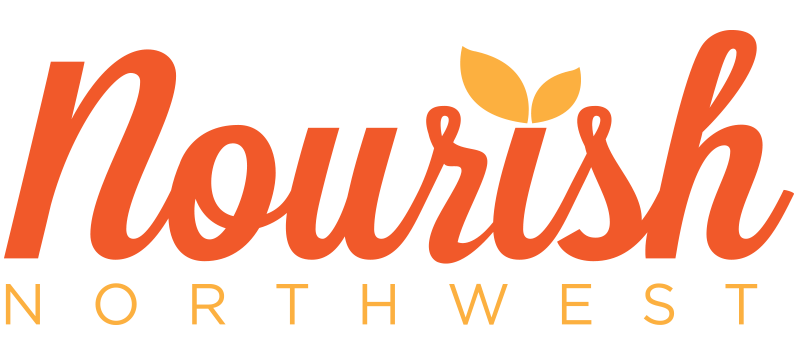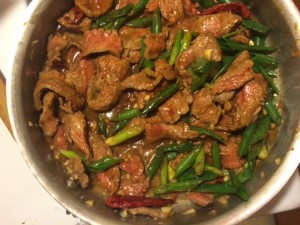Cruciferous Recipe Roundup
 Post by Paula Jahn, Co-owner and Registered Dietitian & Cooking Instructor at Nourish Northwest
Post by Paula Jahn, Co-owner and Registered Dietitian & Cooking Instructor at Nourish Northwest
In the four years I’ve contributed to this blog, I’ve offered many vegetable recipes. In the winter, I often default to cruciferous vegetables at home. Yes, they boast anti-inflammatory and anti-cancer benefits, but I eat them because they are my favorite. I’m not just being a pious dietitian when I say that I prefer roasted cauliflower over potato chips. Read More
Why I Work Out
 Post by Olivia Martino, Personal Trainer, Registered Dietitian and Co-Owner, Nourish Northwest
Post by Olivia Martino, Personal Trainer, Registered Dietitian and Co-Owner, Nourish Northwest
Many years ago, I started working out for one reason: to manage weight. The phrase “calories in vs. calories out” had been burned into my brain and I believed if I wanted to consume certain foods and not gain weight, then I had to work out. Since then, science has taught us that weight control is so much more complex than that simple equation and simultaneously, I have learned that so are my reasons for working out. Read More
The Benefits of a Physical Therapist
 Post by Lily Gil, Personal Trainer and Group Fitness Instructor, Nourish Northwest
Post by Lily Gil, Personal Trainer and Group Fitness Instructor, Nourish Northwest
Ten years ago, or maybe even more at this point, I was diagnosed with a moderate “S” shaped scoliosis curve in my spine. For those of you unfamiliar with scoliosis, often people either have a “C” shaped or “S” shaped spinal curvature that ranges from minor and hardly noticeable, to very painful and requiring surgery. Unfortunately, mine was caught after I’d finished growing, so bracing my spine wasn’t an option, but it wasn’t quite at the severe-enough-to-operate stage (knock on wood it stays that way) Read More
Recipe: Winter Smoothie
 Post by Paula Jahn, Co-owner and Registered Dietitian & Cooking Instructor at Nourish Northwest
Post by Paula Jahn, Co-owner and Registered Dietitian & Cooking Instructor at Nourish Northwest
In the winter, I generally crave warming foods. Hearty bean and vegetable stew, slow cooked meat, gooey casserole, tea…But lately, I’ve been dreaming about a smoothie. I have a stash of frozen berries and bananas on hand for such a hankering, but today I wanted to do something more seasonal. I wanted to include seasonal fruit and also have it be rich and warming. Read More
Managing Cravings and A Recipe for Mongolian Beef
Post by Olivia Martino, Registered Dietitian and Co-Owner Nourish Northwest
Whether it be a warm fudgy brownie, a creamy, carby macaroni and cheese or the salty crunch of a Dorito, we have all experienced the intense pressures of a food craving before. For some of us, this is a daily occurrence and we are too often faced with the stressful decision of whether or not to give in. There are times that definitely warrant saying yes and there are other times when the healthier choice is to resist; I’ll get to that in a moment. Before you decide either way, just take a second to think about why you might be experiencing the craving in the first place. Taking a minute to stop and think may be all you need to do to distract yourself and realize you don’t even want it. Our successful weight loss clients often use food logging as practice and this is the same premise. Stopping a moment rather than giving in on an impulse might just do the trick. But there may be a deeper reason that you want that food, so let’s explore that for a moment.
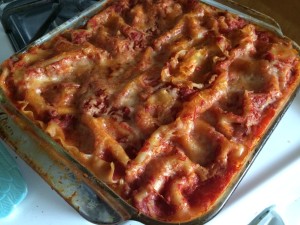
Could it be a nutrient deficiency? Science would actually say no to this question. Studies have shown that food cravings do not reflect an actual nutrient deficiency and that most people in this country are not severely deficient in any nutrients (with the exception of Vitamin D). However, I believe that there is value in listening to your body and supplying it with the particular nutrient you are craving. For example, I know that when I don’t eat meat for a long time, I start to get a strong craving for it. I never show any signs of severe protein malnutrition or iron deficiency and if I was tested my blood levels would most likely be within normal limits. Science can’t necessarily prove that eating some meat makes me feel more grounded, satiated and energetic but I believe these are first signs of a minor deficiency. Similarly, some long distance runners have told me that they crave salty foods after a race. Again, they are probably not chronically deficient in sodium, but these are initial signs and shouldn’t be ignored.
Is it hormonal? Once again, science says no, but I personally will kill you and the people that did the studies if you don’t give me a piece of chocolate at that time of the month. This would be one of those times when giving in to the craving is the healthiest option. All kidding aside, studies have shown that there is no direct hormone-chocolate link and that we crave chocolate at that time of the month because of a perceived idea of how it will make us feel; in other words, nostalgia. We remember chocolate creating a pleasant feeling and we want to experience that again.
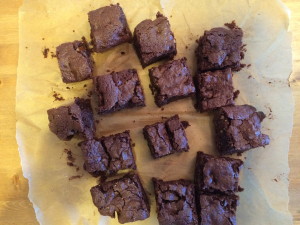
Memories/nostalgia are one of the strongest reasons we crave particular foods. For example, think about the holidays. I can’t wait to eat stuffing and mashed potatoes at Thanksgiving. I never have a craving to make those foods at any other time during the year. In fact, I don’t even think I really like those foods but at Thanksgiving time, they sound like just about the best thing ever.
Food can have some incredibly strong ties to emotions and can be linked to very specific memories about a time or a person in our lives. Many of us have dishes that are passed down in our families. We eat them because of the place we are taken to when we bite into them, not necessarily because of the taste at all. We often crave foods when we are sad or stressed out, again because of a perceived effect these foods might have on us. We typically don’t realize this is even happening. We think we want the cookie because it is going to taste good but what may be really going on is that we want to be taken back to a happy memory of when we ate that same cookie.
Blood sugar imbalances are one of the main physiological reasons that we crave certain foods, most often sugar itself. When our blood sugar is low, typically when we go too long in between eating or are experiencing a sugar crash, our body literally needs a form of sugar to get back up to a normal blood level. It tells us this in the form of crankiness, tiredness, extreme hunger or craving for sugar, dizziness and/or headache.
Low levels of neurotransmitters is another physiological cause for food cravings and one that I find fascinating. This links food directly to brain function and mood, which is an important connection to be aware of. Seratonin is the “feel good” neurotransmitter and is more strongly linked to diet than any other neurotransmitter. We need certain nutrients, mainly the amino acid tryptophan and B vitamins to manufacture seratonin. If we are not consuming enough of these nutrients, we may have low levels of seratonin, which can result in depression, insomnia and once again, food cravings.
Lastly, another reason that we crave foods is simply out of habit. Maybe you always eat dessert after dinner and you just don’t feel complete unless you do. Or you always eat a snack at 3 pm and even if you’re not hungry something is telling you to do it.
This is a lot to think about. If you are thinking about all of this in your head, chances are you have already completely forgotten about the food craving. If it is still persistent, here’s what you can do:
- Address the root cause of the craving
- Stabilize blood sugar through sweet fruits and vegetables, whole grains or low-sugar sweet alternatives. Make sure to balance out the sugar with a fat or protein to avoid future crashes.
- If emotional, explore healthier ways to deal with sadness/stress. Journaling, exercising, meditating, spending time with loved ones and reading are all healthier options.
- If nostalgic, think back to how this food makes you feel and explore new ways to produce the same feeling. If it is a person you are missing, do something to honor that person. It’s ok to let those emotions come up.
- Boost seratonin production through whole grains, fish, nuts and seeds, greens, citrus.

- Satisfy the craving through a healthier option
- Craving creamy ice cream? Try a blended frozen banana
- Craving something crunchy? Try crispy chickpeas or popcorn
- Craving sugar? Try a date with almond butter or dried mango
There is a caveat to this one. Remember sugar is sugar and treats are treats and sometimes what you think is a healthier option is not. Just because a product is labeled “low sugar” or “low fat” doesn’t mean it’s healthier. Be aware if the food choice is still supplying added sugar.
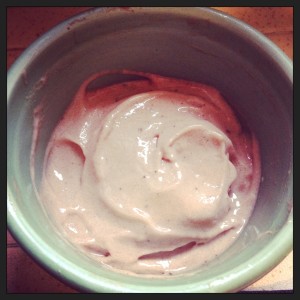
- The Holding Technique: Get through the craving by not giving in. It can be really empowering to realize that you can get through it and this might actually invoke an increased energy level and positive emotions. We like to use this technique to help kick sugar cravings. If you consider yourself a sugar addict, try eliminating all added sugars from your diet for 3 days and you will find that you stop craving it!
- Exercise: Boosts energy naturally, creates endorphins, curbs appetite and distracts you from the craving.
- Giving in is sometimes ok!!! I want to stress this one. Resistance may only make craving stronger and also have the effect of putting a negative label on the food of it being bad or off limits. Giving in everyday probably isn’t the best option, but once and awhile it’s totally fine. The big picture of what you are eating is much more important than that one donut you ate that one time.
All of this leads me to the following recipe. I mentioned that I crave red meat about once/month. I do believe it’s my body trying to tell me that I need it. And while I avoid it most of the time for many reasons, when that monthly craving strikes, I satisfy it immediately in the most delicious way possible.
Mongolian Beef
adapted from No Recipes
Serves 4.
beef and marinade
1 lb. flank steak, sliced thin on a slight diagonal against the grain
1 tbsp mirin
1 tbsp oyster sauce or hoisin sauce
1/2 tsp cornstarch
sauce
4 tbsps hoisin sauce
2 tbsps mirin
1 tbsp doubanjiang (spicy chili bean paste)*
other goodies
2 tbsps vegetable oil, olive oil or sesame oil
6 dried red hot chili peppers (the tiny kind)
4 cloves garlic, minced
5-6 scallions, sliced on the diagonal
2 cups cooked brown rice
1 head of broccoli, chopped into florets and steamed
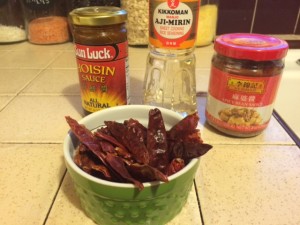
Combine the beef, 1 tablespoon of mirin, oyster or hoisin sauce, and cornstarch in a bowl. Mix until the beef is evenly coated. Set aside. In a small bowl, stir the hoisin sauce, 2 tablespoons of mirin, and the doubanjiang together. Set aside. Heat the vegetable oil in a wok or sauté pan over medium high heat until hot. Add the red chili peppers and minced garlic, stirring until the garlic is fragrant. Add the beef to the pan and sauté until the beef is just pink in the center. Toss the scallions and sauce into the pan and sauté until the sauce caramelizes (a few minutes). Serve hot on top of rice and with broccoli.
